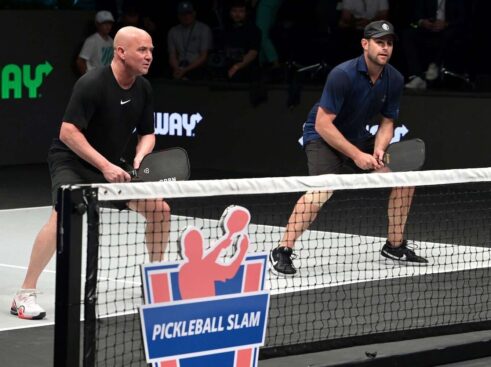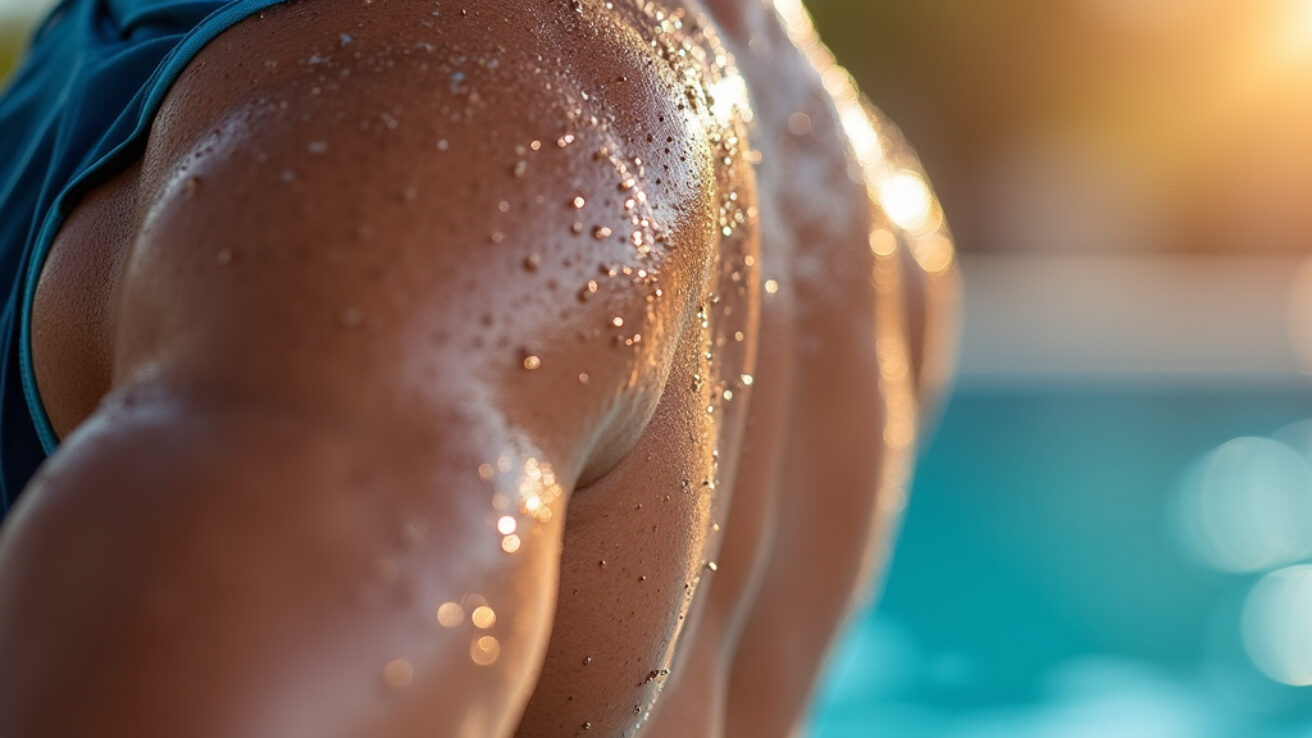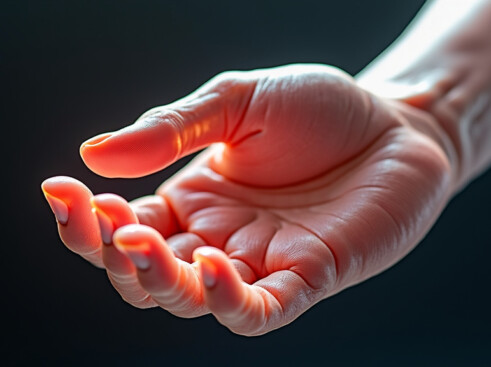Have you ever felt your muscles cramping during an intense workout, or hit that wall where your energy suddenly drops? These symptoms often signal the crucial connection between electrolytes and exercise performance.
These essential minerals play a vital role in how our bodies function during physical activity. Athletes know firsthand the stark difference between proper hydration and struggling through a workout while depleted.
As sports dietitian Claire Shorenstein explains, Electrolytes are essential to power muscles, generate energy, and assist in nerve function
. During exercise, we lose both water and critical minerals through sweat – elements that keep our bodies performing optimally.
The fitness industry recognizes that hydration involves more than just water intake. Brands like LMNT have developed advanced electrolyte replenishment solutions, creating precisely formulated drink mixes that maintain optimal hydration levels for maximum workout effectiveness.
Understanding the relationship between electrolytes and exercise recovery is crucial for anyone committed to their fitness goals. Whether you’re an endurance athlete or just starting your workout routine, proper electrolyte balance can mean the difference between a productive session and one that leaves you depleted.
Sodium is lost in the largest quantity followed by chloride, while potassium, magnesium, and calcium are lost in smaller amounts
Claire Shorenstein, RD
Note: This article contain affiliate links. If you purchase through these links, we may earn a commission at no extra cost to you.
Understanding Electrolytes: Key Players in Body Function

Electrolytes act as your body’s electrical system operators – these essential minerals carry electrical charges that keep vital functions running smoothly. Just as a car needs the right mix of fluids to operate, your body requires a precise balance of electrolytes to maintain optimal performance.
According to research from the Cleveland Clinic, electrolytes like potassium, sodium, magnesium, and calcium are crucial for regulating fluids and supporting nerve and muscle function. Without proper levels of these minerals, our bodies cannot function effectively.
The Power Players: Essential Electrolytes
Sodium acts as a primary electrolyte, controlling your body’s fluid levels and supporting critical nerve signals. It directs water throughout your system, much like a precise traffic controller.
Potassium works alongside sodium, managing muscle contractions and heart rhythm. Together, these electrolytes maintain your body’s electrical balance.
Calcium plays a vital role in muscle function and bone health. A study by the National Institutes of Health confirms its importance in skeletal mineralization, muscle contractions, and nerve impulse transmission.
Magnesium supports hundreds of biochemical reactions in your body. It’s essential for proper muscle function and energy production at the cellular level.
Maintaining the Balance
Your body works continuously to keep electrolyte levels in check, maintaining precise equilibrium. When this balance shifts, you may experience symptoms ranging from muscle cramps to fatigue.
Research shows that electrolyte imbalances most commonly occur during intense exercise or illness, which explains why athletes prioritize electrolyte replacement during training.
A well-balanced diet typically provides all the electrolytes you need. LMNT, a leader in electrolyte supplementation, emphasizes that optimal health occurs when electrolyte levels are properly maintained through both diet and, when necessary, supplementation.
Remember that proper hydration involves more than just water intake – it requires maintaining the right balance of these essential minerals in your system. This balance becomes particularly important during physical activity or hot weather.
| Electrolyte | Function | Primary Source |
|---|---|---|
| Sodium | Maintains fluid balance, supports nerve signals | Table salt, processed foods |
| Potassium | Regulates muscle contractions and heart rhythm | Bananas, potatoes |
| Calcium | Supports bone health, muscle function | Dairy products, leafy greens |
| Magnesium | Involved in biochemical reactions, muscle function | Nuts, seeds, whole grains |
The Science of Electrolyte Loss During Exercise
When you hit the gym or head out for a run, your body loses crucial electrolytes along with water through sweat, affecting how your systems function. As someone who’s studied exercise science extensively, I’ve seen firsthand how understanding electrolyte loss can be a game-changer for performance.
The primary electrolytes lost in sweat include sodium, chloride, and potassium. Research shows that sodium losses range from 10-90 millimoles per liter of sweat, with average concentrations between 30-65 millimoles per liter. These concentrations vary significantly based on exercise intensity.
| Exercise Intensity | Whole Body Sweat Loss (L) | Sweat Sodium Concentration (mmol/L) | Total Sodium Loss (mg) | Total Chloride Loss (mg) |
|---|---|---|---|---|
| Low (45% VO2max) | 0.86±0.15 | 32.6±14.3 | 659±340 | 931±494 |
| Moderate (65% VO2max) | 1.27±0.24 | 52.7±14.6 | 1565±590 | 2378±853 |
Exercise intensity significantly influences electrolyte loss. Studies show that sodium and chloride losses can spike by as much as 150% when moving from moderate to vigorous intensity. This means a challenging CrossFit session will deplete your electrolytes much faster than a casual walk.
Duration is another critical factor. During prolonged exercise, particularly in hot conditions, total electrolyte losses can become substantial. For example, a two-hour training session at moderate intensity could result in sodium losses of up to 2-3 grams – that’s more than you’d get from a teaspoon of table salt.
Environmental conditions significantly affect sweat and electrolyte loss rates. In hot and humid environments, your body increases sweating to maintain temperature, leading to greater electrolyte losses. Proper hydration becomes even more crucial in these conditions to prevent performance decline.
The consequences of significant electrolyte loss can be serious. When electrolyte levels drop too low, you might experience muscle cramps, fatigue, and mental confusion. In extreme cases, it can lead to more severe complications like hyponatremia (dangerously low sodium levels) – a condition I’ve unfortunately seen affect several endurance athletes.
Heat stress compounds these effects. As your core temperature rises during exercise, sweating rates increase to cool your body. This accelerated sweat loss means faster depletion of electrolytes, creating a challenging situation for maintaining proper balance.
Total sweat sodium and chloride losses can increase by approximately 150% when exercise intensity increases from 45% to 65% of VO2max, suggesting different fluid/electrolyte intake strategies may be needed depending upon variations in exercise intensity between training sessions.
Baker et al., European Journal of Applied Physiology
Understanding your individual sweat rate and electrolyte loss patterns is crucial. Some athletes are “salty sweaters,” losing more sodium than others. If you notice white residue on your skin or clothes after workouts, you might fall into this category and need to pay extra attention to electrolyte replacement.
Timing is Everything: When to Consume Electrolytes
Strategic timing of electrolyte consumption can make or break your workout performance. Just as elite athletes carefully plan their nutrition, understanding when to take electrolytes can give you a significant edge in your fitness journey.
Research confirms that proper electrolyte timing can improve muscle power, enhance endurance, and accelerate recovery. Let’s explore the optimal windows for electrolyte intake to maximize your results.
Your personal needs may vary based on factors like exercise intensity, duration, and individual sweat rate. Some athletes lose up to 2,000 milligrams of sodium per liter of sweat, while others may only lose 200 milligrams.
Pre-Workout Electrolyte Strategy
According to sports dietitian Claire Shorenstein, consume electrolytes 1-2 hours before exercise if you’re planning a longer or more intense workout. This preloading helps prepare your body for the upcoming fluid and mineral losses.
For high-intensity sessions lasting over an hour, consider adding electrolytes to your dinner the night before, especially if you’re a heavy sweater or training in hot conditions. This proactive approach ensures optimal hydration from the start.
If you’re short on time before training, a sports drink provides quick absorption of carbs, salt, and fluids. However, if you have an hour or more, getting electrolytes through food like a banana with salted oatmeal may be preferable.
During-Workout Hydration Needs
For workouts under 60 minutes in moderate conditions, plain water is typically sufficient. However, longer or more intense sessions require strategic electrolyte replenishment to maintain performance.
Indoor workouts may require more frequent electrolyte intake than outdoor sessions because limited air circulation causes the body to heat up faster and produce more sweat to cool down.
Heavy sweaters should consider sipping on sodium-containing fluids even during shorter workouts. Watch for signs of electrolyte depletion like muscle cramps, fatigue, or headaches.
Post-Exercise Recovery
Within 30 minutes after completing an intense workout, focus on replenishing lost electrolytes to support recovery. The combination of fluid, sodium, and carbohydrates helps you rehydrate faster than water alone.
According to registered dietitian Amy Stephens, start the rehydration process with liquids for quick absorption. Follow this with electrolyte-rich foods like a sandwich with pickles or yogurt with granola.
Plain water can actually be counterproductive after very long or intense workouts. It’s crucial not to just drink plain water here,
explains Shorenstein, as it will only make you drink less and urinate more, which will dehydrate you for longer.
Choosing the Right Electrolyte Source for Your Workout
Replenishing electrolytes during exercise offers several options, each with distinct benefits and considerations. Through years of experimentation with different methods, I can guide you toward the most effective solution for your needs.
Sports drinks like Gatorade and Powerade provide convenient, readily available options, combining electrolytes with quick-absorbing carbohydrates. However, they contain high amounts of added sugars – typically over 20 grams per serving. While beneficial for endurance athletes during extended training sessions, these drinks aren’t necessary for moderate workouts under an hour.
Electrolyte powders serve as effective alternatives, offering concentrated electrolyte blends without excess sugar. Products like LMNT deliver up to 1,000mg of sodium per serving. These powders provide precise control over electrolyte intake and come in convenient single-serve packets ideal for on-the-go use.
Natural Food Sources: The Whole-Food Approach
Whole foods serve as excellent electrolyte sources. Bananas contain approximately 400mg of potassium per serving, while coconut water provides a natural blend of potassium, magnesium, and calcium. These options deliver additional nutrients and fiber that benefit overall health.
Sweet potatoes, yogurt, and leafy greens like spinach provide essential electrolytes, especially magnesium and calcium. These whole food options work well for daily maintenance and less intense workouts where immediate electrolyte replenishment isn’t crucial.
Making the Right Choice for Your Workout
For high-intensity training sessions exceeding an hour, particularly in hot conditions, electrolyte powders or sports drinks prove most effective. Their quick absorption rates and precise electrolyte ratios help maintain performance during heavy sweating.
For lighter workouts or yoga sessions, natural food sources paired with water typically suffice. Choose your electrolyte source based on activity level, sweat rate, and personal preferences, considering convenience, taste, and your body’s response to different options.
If you’re a heavy sweater or training goes beyond 60 minutes, look for products providing 500-700mg of sodium per hour to maintain optimal hydration and performance.
American College of Sports Medicine
| Source | Electrolytes Provided | Additional Benefits |
|---|---|---|
| Potatoes | Potassium | Supports kidney and muscle function |
| Nuts (Almonds, Cashews, Brazil Nuts) | Magnesium, Calcium, Potassium | Regulates blood sugar and pressure |
| Broccoli | Calcium, Magnesium, Potassium | Supports bone health and blood clotting |
| Sunflower and Pumpkin Seeds | Magnesium, Phosphorus | Maintains muscle and bone health |
| Cow’s Milk | Calcium, Phosphorus, Sodium | Supports bone health and fluid balance |
| Coconut Water | Potassium, Sodium, Chloride | Effective for rehydration |
| Pickle Juice | Sodium, Potassium, Calcium, Magnesium | Prevents muscle cramps |
| Sports Drinks | Sodium, Potassium | Replenishes electrolytes during exercise |
Electrolytes for Different Types of Exercise

The intensity and duration of your workout significantly impact your body’s electrolyte needs. From endurance athletes pushing through marathons to weightlifters performing explosive movements, each type of exercise demands a tailored approach to electrolyte replenishment.
Research shows that athletes can lose between 400 and 2,400ml of sweat per hour during exercise, with electrolyte concentrations varying significantly among individuals and exercise types. Understanding your specific needs based on your chosen activity is essential for optimal performance.
LMNT, a leading electrolyte supplement company, recommends consuming 700-900mg of electrolytes per liter of fluid during intense exercise sessions to maintain proper hydration and performance.
Endurance Training Requirements
Marathon runners and long-distance cyclists face unique hydration challenges. During extended training sessions lasting over 60 minutes, athletes can lose significant amounts of sodium – up to 1,000mg per hour of intense exercise.
For endurance athletes, electrolyte replenishment is critical. Research indicates that replacing fluids and electrolytes lost through sweating within two hours post-exercise is essential for optimal recovery and reduced fatigue.
A strategic approach involves consuming 300-600mg of sodium per hour during prolonged exercise, alongside adequate fluid intake to prevent dehydration.
High-Intensity Interval Training (HIIT)
HIIT workouts create intense sweating episodes that rapidly deplete electrolyte stores. These high-intensity sessions cause greater electrolyte loss in a shorter time period compared to steady-state cardio.
Research on electrolyte replenishment during high-intensity exercise shows that athletes should prioritize immediate post-workout recovery with both carbohydrates and electrolytes to support muscle function and prevent cramping.
For optimal HIIT performance, experts recommend consuming an electrolyte drink containing 250-300mg of sodium per serving during and immediately after your workout.
Strength Training Considerations
Weightlifters and strength athletes generally have lower hydration requirements than endurance athletes, but proper electrolyte balance remains crucial for muscle function and recovery.
Research indicates that strength training in heated environments or during intense sessions can lead to significant electrolyte loss. Maintain adequate hydration with 250mg of sodium per hour during training.
Post-workout recovery for strength athletes should include both protein and electrolytes to support muscle repair and maintain proper fluid balance.
Signs of Electrolyte Imbalance and How to Address Them
During intense physical activity, your body’s electrolyte balance can become disrupted, affecting both your performance and overall wellbeing. These essential minerals carry electrical charges that keep your nerves firing and muscles contracting properly.
Research shows athletes can lose 2-6% of their body weight through sweating during exercise sessions. This fluid loss depletes not only water but also crucial electrolytes like sodium, potassium, and magnesium.
Understanding the warning signs of electrolyte imbalance is essential for maintaining peak performance and preventing serious complications. Here are the key symptoms to watch for and how to address them effectively.
Common Warning Signs of Electrolyte Imbalance
One of the earliest and most common indicators of electrolyte imbalance is muscle cramping, ranging from mild discomfort to severe pain. These painful contractions typically occur when calcium, magnesium, or potassium levels drop too low.
Fatigue and unusual weakness signal that your electrolyte levels need attention. When sodium and potassium levels become depleted, your energy levels may drop significantly even during normally manageable workouts.
Watch for symptoms like dizziness, headaches, or mental confusion, as these can indicate a more severe electrolyte imbalance requiring immediate attention. These cognitive effects typically stem from sodium imbalances affecting brain function.
Irregular heartbeat or heart palpitations may occur when potassium and calcium levels become significantly imbalanced. While less common, these symptoms require immediate medical attention.
Nausea and digestive disturbances can also signal an electrolyte imbalance, particularly during or after intense exercise in hot conditions.
How to Address Electrolyte Imbalances Quickly
The first step in addressing an electrolyte imbalance is to stop exercising and begin rehydrating immediately. For mild cases, plain water combined with electrolyte-rich foods can help restore balance.
Consider incorporating natural sources of electrolytes into your recovery nutrition. Bananas and sweet potatoes provide potassium, while leafy greens offer magnesium and calcium.
For faster replenishment, especially after intense workouts lasting over 60 minutes, a sports drink or specialized electrolyte supplement may be beneficial. Look for options that provide a balanced ratio of sodium, potassium, and other key minerals.
If symptoms persist or worsen despite these interventions, seek medical attention immediately. Severe electrolyte imbalances can be dangerous and may require professional treatment.
Monitor your hydration status by checking your urine color – it should be light yellow. Dark urine indicates dehydration, while very clear urine might signal overhydration, which can also disrupt electrolyte balance.
Prevention Strategies for Future Workouts
Start hydrating well before your workout begins, aiming to drink about two cups of fluid two hours prior to exercise. This gives your body time to properly absorb the fluids.
During exercise, especially in hot conditions, drink 4-6 ounces of fluid every 15-20 minutes rather than waiting until you feel thirsty. Remember, thirst is often a late indicator of dehydration.
Consider your sweat rate and exercise intensity when planning your hydration strategy. Heavy sweaters and those exercising in hot conditions will need more frequent electrolyte replacement.
Pay attention to early warning signs like mild cramping or fatigue. Addressing these symptoms promptly can prevent them from becoming more severe.
For longer training sessions or competitions, develop a personalized hydration plan that accounts for your individual needs and the specific demands of your activity.
| Food | Electrolyte Content | Additional Benefits |
|---|---|---|
| Baked Potato | 926 mg Potassium | Vitamin C, Protein |
| Banana | 375 mg Potassium | Magnesium, Phosphorus |
| Chocolate Milk | 322 mg Calcium, 430 mg Potassium | Carbs, Protein |
| Cottage Cheese | 97 mg Potassium, 70 mg Calcium | Protein |
| Spinach | 167 mg Potassium | Vitamin K |
| Avocado | 487.5 mg Potassium | Fiber, Healthy Fats |
Optimizing Your Electrolyte Strategy for Peak Performance
Scientific research continues to highlight the critical role of proper electrolyte balance in athletic performance, advancing our understanding of exercise nutrition. Athletes increasingly choose alternatives to traditional sugary sports drinks that contain unnecessary additives.
At the forefront of hydration science, LMNT combines precise electrolyte ratios with clean, natural ingredients. Research shows that optimal athletic performance requires sodium levels 2-3 times higher than standard government recommendations, especially for those following low-carb or ketogenic diets.
Athletes now understand that personalized hydration strategies, tailored to their specific training needs and dietary preferences, significantly impact their performance outcomes. Contemporary exercise nutrition focuses on these evidence-based, customized approaches using natural ingredients.
Stay hydrated with LMNT – the ultimate science-backed electrolyte drink mix. Get a free sample pack with your purchase – claim yours now!







